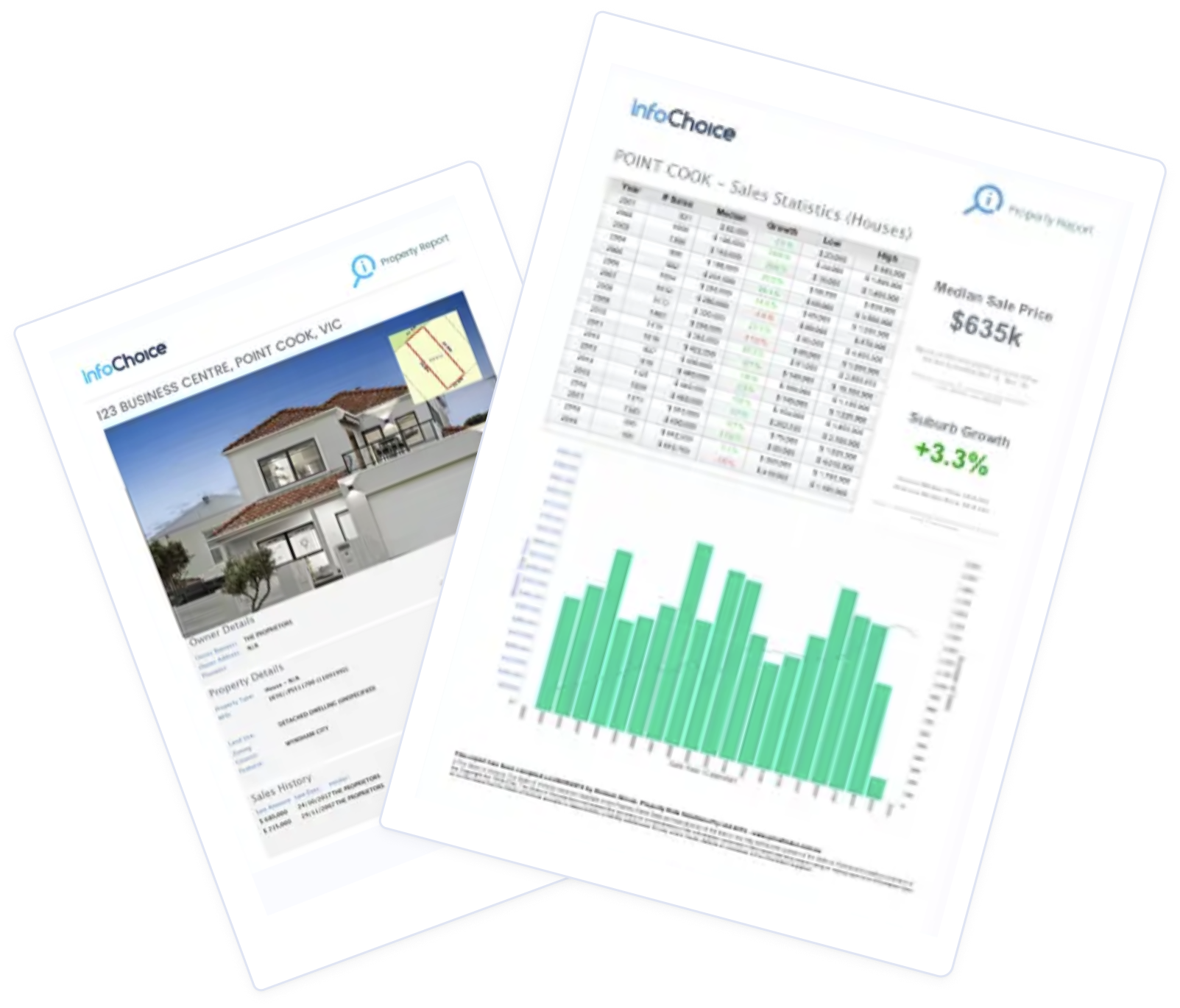
- A standard home loan deposit in Australia is typically 20% of the property's purchase price, though some lenders allow as little as 5%, often requiring Lenders Mortgage Insurance (LMI).
- LMI can be paid upfront, which can cost in excess of $10,000, or can be baked into the loan. You'll have to weigh up paying this versus delaying your purchase to save up a bigger deposit.
- A larger deposit reduces the amount borrowed, potentially lowering interest costs, shortening the loan term, and increasing access to better loan options.
- Government schemes, such as the Home Guarantee Scheme, can help eligible buyers purchase a home with as little as 2-5% deposit while avoiding LMI, though restrictions apply.
- Buyers must factor in additional costs like stamp duty, legal fees, and transaction costs when saving for a home deposit, and may use savings, grants, gifts, or equity to contribute.
Your home loan deposit is your down-payment, or first contribution, to the purchase price of the property that you're buying. Paying this contribution means that you actually own a small portion of the home.
A bigger home loan deposit may mean not having to borrow as much money from your lender, which could lead to paying less interest over the life of your loan, and paying it off sooner. Further, the bigger deposit you have, the more negotiating power and choice of lenders you may have.
The deposit amount required will vary on the lender, but on average, it is typically 20% of the purchasing value or price of a home. For instance, a 20% home loan deposit for a house worth $500,000 is $100,000.
In some cases, there are lenders out there that offer lower deposits of 5%, however you will likely need to pay Lenders Mortgage Insurance (LMI). By using the same example as above, a 5% deposit for a $500,000 home is $25,000.
See Also: Mortgage Repayment Calculator
How Much of A Deposit Do You Need?
As a general rule, most lenders ask buyers to put down at least a 20% deposit to attain the most competitive interest rate. This is 20% of the purchase price and doesn't include the transaction fees.
However, some lenders do offer a lower deposit of up to 5%, though this usually comes with extra criteria. For example, you'd probably need to have solid employment history, great credit history, and proof of a consistent savings plan.
Here are a couple of examples of different deposit amounts if you were to buy a $600,000 property:
A 5% deposit would mean your deposit would be $30,000
A 10% deposit would mean your deposit would be $60,000
A 20% deposit would mean your deposit would be $120,000
As with any financial product that involves you borrowing money, the less you have to borrow, the less you have to pay back.
When purchasing a house, you also have to factor in the costs of solicitor's fees, stamp duty, and any other expenses that your purchase incurs. It's a good idea to see if you're eligible for any of the government schemes for first-time buyers as you could get help with your stamp (or transfer) duty, which can add several thousand dollars to your costs.
You can use a savings calculator to work out how much you'll need to save in order to pay for the deposit and moving costs.
See Also: Stamp Duty Calculator
How to Buy a Home With a 5% Deposit
There are generally two ways to do this: Use a 95% LVR home loan; or use the government's Home Guarantee Scheme.
Many lenders allow up to 95% LVR provided you pay lenders mortgage insurance (LMI) - more on that later. Keep in mind interest rates may be higher on these loans as lenders perceive the risk to be greater.
The alternative is if you're buying your first home, you use the government's Home Guarantee Scheme. This allows you to hop into the market without paying LMI. However, income and property price caps apply; there are also limited places per year, and you must choose from the panel of lenders participating (of which there are 30, including major banks CommBank, Westpac, and NAB).
Below is a selection of 85%+ LVR home loans for owner occupiers.
| Lender | Home Loan | Interest Rate | Comparison Rate* | Monthly Repayment | Repayment type | Rate Type | Offset | Redraw | Ongoing Fees | Upfront Fees | Max LVR | Lump Sum Repayment | Extra Repayments | Split Loan Option | Tags | Features | Link | Compare | Promoted Product | Disclosure |
|---|---|---|---|---|---|---|---|---|---|---|---|---|---|---|---|---|---|---|---|---|
5.54% p.a. | 5.58% p.a. | $2,852 | Principal & Interest | Variable | $0 | $530 | 90% |
| Promoted | Disclosure | ||||||||||
5.54% p.a. | 5.71% p.a. | $2,852 | Principal & Interest | Variable | $null | $null | 90% | |||||||||||||
5.45% p.a. | 5.45% p.a. | $2,823 | Principal & Interest | Variable | $0 | $0 | 90% | |||||||||||||
5.79% p.a. | 5.82% p.a. | $2,931 | Principal & Interest | Variable | $0 | $845 | 90% | |||||||||||||
5.89% p.a. | 6.16% p.a. | $2,962 | Principal & Interest | Variable | $null | $null | 98% | |||||||||||||
5.49% p.a. | 5.95% p.a. | $2,836 | Principal & Interest | Variable | $0 | $530 | 90% |
| Disclosure |
How to Buy a Home With a 2% Deposit
Many lenders cap how much they are willing to lend at 95% of the property value i.e. 95% LVR home loans or a 5% deposit. However, it is possible to buy with a 2% deposit through the government's Home Guarantee Scheme.
This particular offshoot of the program is called the Family Home Guarantee Scheme. You need to be a single parent or guardian of a dependent to qualify. Places are limited, and property price and income caps apply.
The main benefits of the program are that you don't have to pay LMI as the government guarantees the remaining 18% of the deposit, and you don't necessarily need to be a first home buyer.
How to Buy a Home With No Deposit
Borrowing 100% of the property value is hard unless you have what's called a guarantor. A guarantor is a person, usually a family member, who provides the borrower with the additional security for a home loan.
The guarantor agrees to offer equity in their home to top up your deposit. This allows first home buyers to buy their place sooner with a small deposit, and in some cases, no deposit at all.
Having a guarantor can also be a way to avoid paying LMI. Some lenders even offer up to 110% LVR e.g. a $500,000 home value and a $550,000 loan - if the borrower is signing with a guarantor.
While there are obvious benefits, you will want to be sure of your ability to repay the mortgage at 100% LVR, and be confident your co-signing guarantor is happy to potentially risk the equity in their own home.
Another restriction is that many lenders will only offer guarantor home loans if you are both with the same lender. Otherwise, your guarantor might need to refinance to your lender. Exceptions apply, notably ANZ, which does not restrict guarantor loans in this way.
Deposit Amounts for Property Values
|
Property value |
20% deposit (no LMI) |
10% deposit (LMI may apply) |
5% deposit (LMI may apply) |
|---|---|---|---|
|
$500,000 |
$100,000 |
$50,000 |
$25,000 |
|
$600,000 |
$120,000 |
$60,000 |
$30,000 |
|
$700,000 |
$140,000 |
$70,000 |
$35,000 |
|
$800,000 |
$160,000 |
$80,000 |
$40,000 |
|
$900,000 |
$180,000 |
$90,000 |
$45,000 |
|
$1,000,000 |
$200,000 |
$100,000 |
$50,000 |
Interest Rates for Different Loan-to-Value Ratios (LVR)
Every month the RBA publishes data on average rates for new owner occupier loans, delineating between home loans under 80% LVR (i.e. a 20% deposit) and those for greater than 80% LVR (i.e. less than a 20% deposit).
At the end of 2024, the data indicated that <80% loans had an average interest rate of 6.21% p.a. while for >80% loans the average was 6.34% p.a.
That's an average of 13 basis points (0.13%) and on a $600,000 mortgage that's the difference of $50.79 per month on a 30-year term.
What is the Average Home Loan Deposit?
While there's not much official data on average deposit sizes, we're going to do some number crunching based on the CoreLogic's median dwelling prices.
|
City & Median Dwelling Value |
5% Deposit |
10% Deposit |
20% Deposit |
|---|---|---|---|
|
Australia - $815,912 |
$40,796 |
$81,591 |
$163,182 |
|
Sydney - $1,186,459 |
$59,323 |
$118,646 |
$237,292 |
|
Melbourne - $772,561 |
$38,628 |
$77,256 |
$154,512 |
|
Brisbane - $894,425 |
$44,721 |
$89,443 |
$178,885 |
|
Adelaide - $822,201 |
$41,110 |
$82,220 |
$164,440 |
|
Perth - $807,933 |
$40,397 |
$80,793 |
$161,587 |
|
Hobart - $661,544 |
$33,077 |
$66,154 |
$132,309 |
|
Darwin - $506,591 |
$25,330 |
$50,659 |
$101,318 |
|
Canberra - $846,955 |
$42,348 |
$84,696 |
$169,391 |
CoreLogic Home Value Index, February 2025
How long do I need to save for a deposit?
Property group Domain periodically releases research detailing how long it takes a first home buyer to save up 20% for a deposit on an 'entry level' home in each capital city.
|
House Entry Price & Time Taken to Save 20% Deposit |
Unit Entry Price & Time Taken to Save 20% Deposit |
|
|
Sydney |
$990,000 - 6y 9m |
$615,000 - 4y 4m |
|
Melbourne |
$670,000 - 5y 1m |
$437,500 - 3y 5m |
|
Brisbane |
$735,000 - 5y 6m |
$545,000 - 4y 2m |
|
Adelaide |
$689,000 - 5y 6m |
$463,000 - 3y 9m |
|
Perth |
$645,000 - 4y 10m |
$410,000 - 2y 11m |
|
Hobart |
$580,000 - 4y 11m |
$415,000 - 3y 7m |
|
Darwin |
$465,000 - 3y 5m |
$285,000 - 2y 1m |
|
Canberra |
$815,000 - 5y 7m |
$462,000 - 3y 3m |
|
Australia |
$617,500 - 4y 10m |
$481,000 - 3y 4m |
Source: Domain First Home Buyer Report, February 2025
Note that these prices are largely under the median value for each capital city. The time taken to save, too, doesn't usually get shorter, with these times blowing out by as much as eight months compared to a year ago, while the deposit sizes themselves have in some cases increased by more than 80% compared to five years ago.
Pit that against capital growth and you may feel like you're stuck on a hamster wheel unable to save a 20% deposit.
Lenders Mortgage Insurance (LMI) Explained
If you have less than a 20% deposit, you will in all likelihood have to pay LMI. However, some lenders drop LMI if you have a 15% deposit. Contrary to popular belief, LMI is an insurance policy that doesn't protect you - it protects the lender in case you default.
Depending on the property value and your deposit, LMI is an insurance policy that could add up to thousands or even tens of thousands of dollars. You can pay this as a lump sum, but a popular way is to pay it off as part of the mortgage. This way attracts interest, and effectively lowers your deposit further.
It's a personal decision as to whether you decide to get your foot in the property door earlier with a lower deposit and pay LMI, or save up longer to get a 20% deposit together. In many cases, when paid as a lump sum, LMI can drastically eat away at your deposit.
How Much is LMI?
|
Property Value |
LMI at 95% LVR (5% Deposit) |
LMI at 90% LVR (10% Deposit) |
|---|---|---|
|
$500,000 |
$14,871.82 |
$8,679.89 |
|
$600,000 |
$23,954.25 |
$13,284 |
|
$700,000 |
$27,946.62 |
$17,200.43 |
|
$800,000 |
$31,939 |
$17,712 |
|
$900,000 |
$35,931.38 |
$19,926 |
|
$1 million |
$39.923.65 |
$22,140 |
Calculated using Helia as an insurance provider, upfront payments as a first home buyer owner occupier on a 30-year loan term.
Opportunity Cost With LMI
In a hot property market, you might not be afforded the luxury of time, risking property prices increasing further out of reach. On the flipside, in a declining property market, a low deposit essentially means you have a lower buffer and risk paying more on the home loan than the property is worth if prices head south.
Research conducted by Helia indicated that LMI borrowers increased their equity by $107k on average in five years; entered the market up to nine years sooner; and 80% came out financially ahead after five years.
However, based on the calculations above, LMI can be a hefty upfront cost (lest you bake it into the loan and pay interest). If you are going to pay it upfront, in certain scenarios you may be no worse off staying out of the market for a little longer and saving up to a 10% or even 20% deposit.
When do you pay the home loan deposit?
If you're buying the property through a private sale, you'll pay your deposit after you and the vendor exchange your signed contracts.
Meanwhile, if you're buying the property at an auction, you have to sign the contract and pay 5-10% upfront, with the remainder coming later. This means you have to have the funds ready in a bank account to transfer, or in an account with a cheque facility.
It's a lot of money, so how do I make the payment?
You can pay by cheque; although this is an increasingly rare method in most places now, it's still common at auctions. There is also the possibility of using a counter cheque if you don't have a chequebook; you'll need to go into your bank to arrange and collect one.
You can also make a bank transfer, although you'll need to talk to your bank first because some institutions have a daily limit for transfer amounts.
It's also possible to use a deposit bond; a deposit bond is useful if your funds are tied up in other investments. It's a guarantee that you'll pay the deposit at the time of settlement (remember, you're legally bound once you've exchanged contracts).
Not all real estate agents and vendors will accept deposit bonds and some banks don't offer them, so make sure you can use one before you get too far along in the process. It may be the case that you have to make arrangements to release funds earlier than you expected to.
What is 'genuine savings' on a home loan deposit?
Most lenders prefer your home loan deposit to be made up of money you've earned from your job and put away for safekeeping. Lenders will generally like to see regular savings paid into a bank account for at least three months. By saving money and leaving it untouched, you demonstrate to the lender that you are capable of making regular repayments and have financial discipline.
Other savings
Grants
Most Australian states and territories offer a First Home Owner Grant (FHOG) to help Aussies buy their first property. If you're eligible for the grant, you may be able to add $10,000 to $20,000 to your home loan deposit.
Gifts of money
If your parent or other family members help you get into the property market with a gift of money, this could count towards your home loan deposit.
However, there are a few rules to watch out for.
When a family member gifts you money, the lender will likely ask for a statutory declaration where you must prove it is in fact a 'gift' and you aren't expected to pay the money back.
Additionally, most (but not all) lenders will require the money to be held in an account for at least three months, similar to the genuine savings, otherwise they may not accept the money towards your deposit.
Equity from another property
If you already own another property, you may be able to use the property's equity in place of a deposit if you want to refinance your home loan to purchase a second property as an investment.
Your equity in a home is the current value of the property, minus how much you owe on the mortgage.
First written by Hanan Dervisevic in September 2022
First published in September 2022





